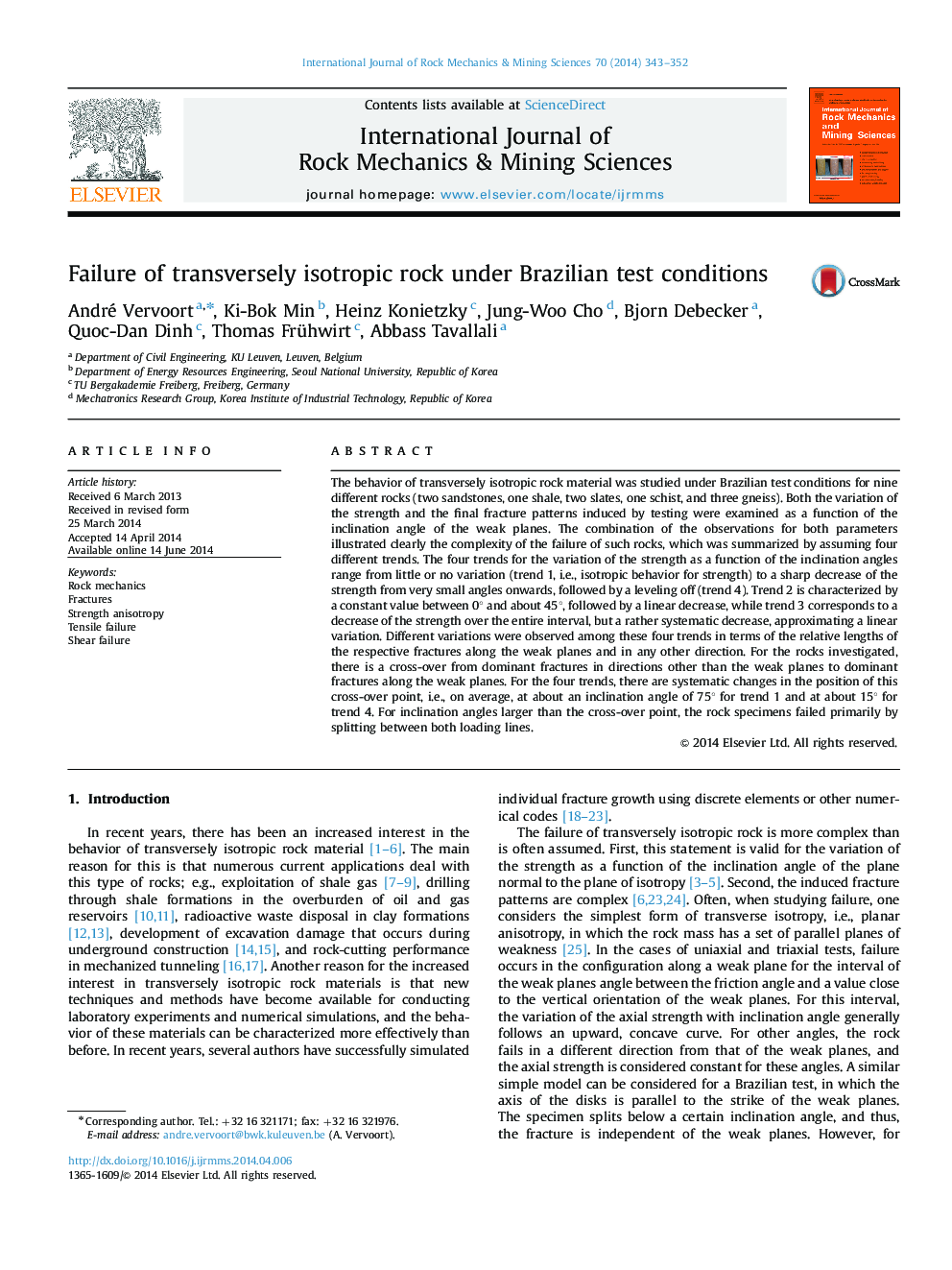| Article ID | Journal | Published Year | Pages | File Type |
|---|---|---|---|---|
| 809107 | International Journal of Rock Mechanics and Mining Sciences | 2014 | 10 Pages |
•The complex behavior of transversely isotropic rock material is studied.•The paper focuses on nine different rocks under Brazilian test conditions.•The variation of strength as a function of the inclination angles is compared.•Different types of fractures are described.•The relative length of the different fractures is estimated.
The behavior of transversely isotropic rock material was studied under Brazilian test conditions for nine different rocks (two sandstones, one shale, two slates, one schist, and three gneiss). Both the variation of the strength and the final fracture patterns induced by testing were examined as a function of the inclination angle of the weak planes. The combination of the observations for both parameters illustrated clearly the complexity of the failure of such rocks, which was summarized by assuming four different trends. The four trends for the variation of the strength as a function of the inclination angles range from little or no variation (trend 1, i.e., isotropic behavior for strength) to a sharp decrease of the strength from very small angles onwards, followed by a leveling off (trend 4). Trend 2 is characterized by a constant value between 0° and about 45°, followed by a linear decrease, while trend 3 corresponds to a decrease of the strength over the entire interval, but a rather systematic decrease, approximating a linear variation. Different variations were observed among these four trends in terms of the relative lengths of the respective fractures along the weak planes and in any other direction. For the rocks investigated, there is a cross-over from dominant fractures in directions other than the weak planes to dominant fractures along the weak planes. For the four trends, there are systematic changes in the position of this cross-over point, i.e., on average, at about an inclination angle of 75° for trend 1 and at about 15° for trend 4. For inclination angles larger than the cross-over point, the rock specimens failed primarily by splitting between both loading lines.
